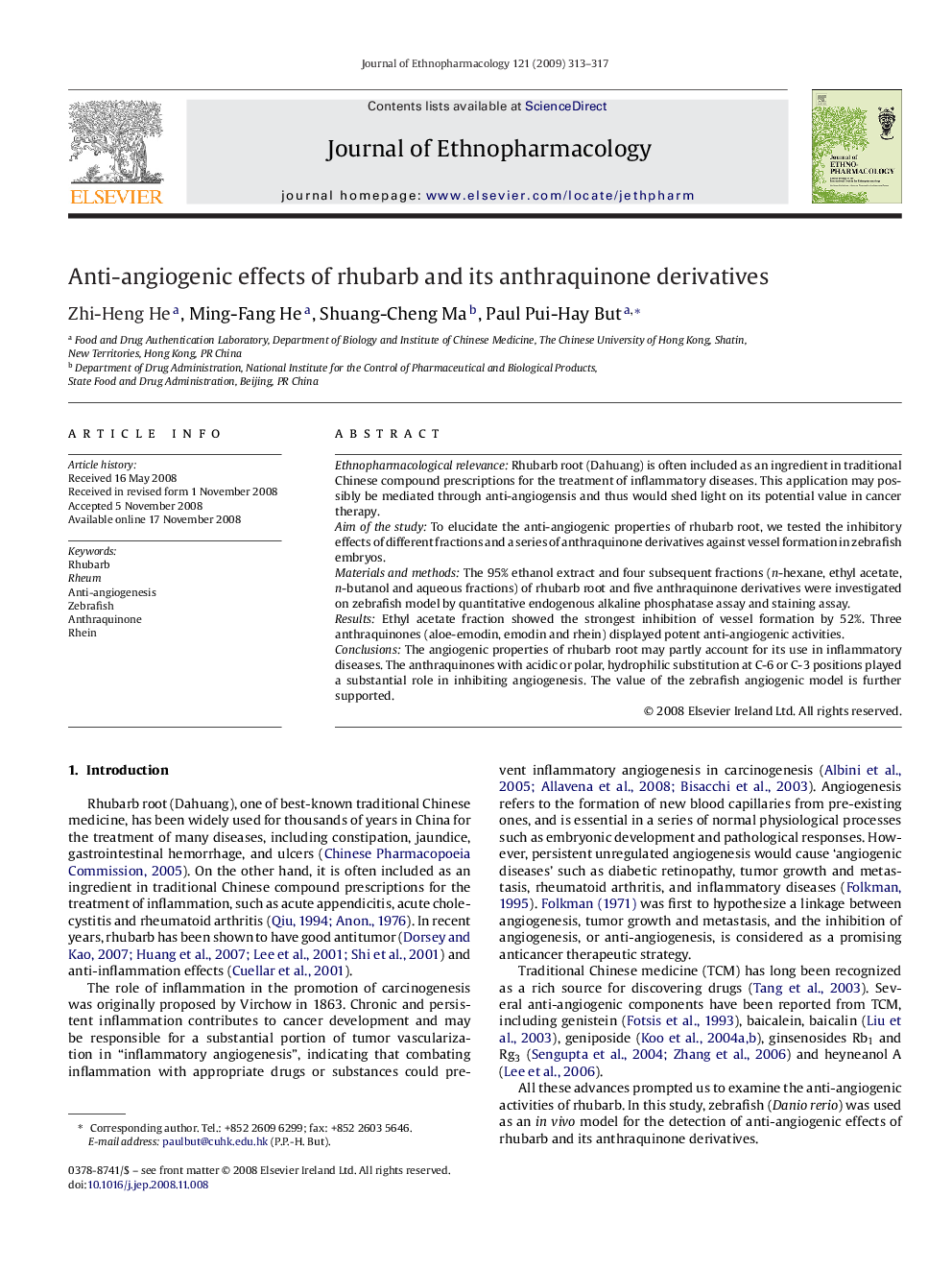| کد مقاله | کد نشریه | سال انتشار | مقاله انگلیسی | نسخه تمام متن |
|---|---|---|---|---|
| 2547739 | 1124067 | 2009 | 5 صفحه PDF | دانلود رایگان |

Ethnopharmacological relevanceRhubarb root (Dahuang) is often included as an ingredient in traditional Chinese compound prescriptions for the treatment of inflammatory diseases. This application may possibly be mediated through anti-angiogensis and thus would shed light on its potential value in cancer therapy.Aim of the studyTo elucidate the anti-angiogenic properties of rhubarb root, we tested the inhibitory effects of different fractions and a series of anthraquinone derivatives against vessel formation in zebrafish embryos.Materials and methodsThe 95% ethanol extract and four subsequent fractions (n-hexane, ethyl acetate, n-butanol and aqueous fractions) of rhubarb root and five anthraquinone derivatives were investigated on zebrafish model by quantitative endogenous alkaline phosphatase assay and staining assay.ResultsEthyl acetate fraction showed the strongest inhibition of vessel formation by 52%. Three anthraquinones (aloe-emodin, emodin and rhein) displayed potent anti-angiogenic activities.ConclusionsThe angiogenic properties of rhubarb root may partly account for its use in inflammatory diseases. The anthraquinones with acidic or polar, hydrophilic substitution at C-6 or C-3 positions played a substantial role in inhibiting angiogenesis. The value of the zebrafish angiogenic model is further supported.
Journal: Journal of Ethnopharmacology - Volume 121, Issue 2, 21 January 2009, Pages 313–317